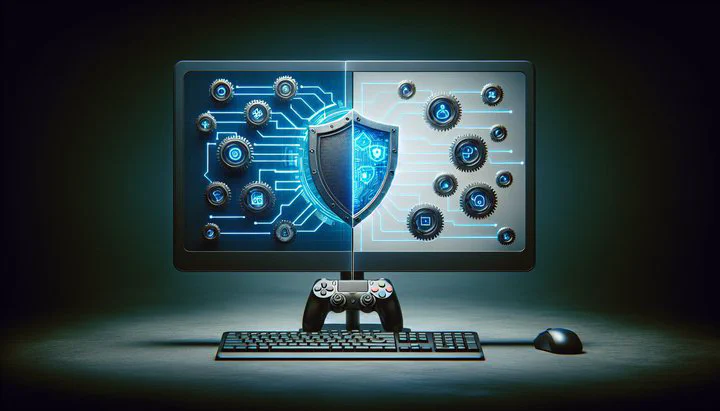Crowdstrike Coexisting with Anti-Cheat Software

How to Make Crowdstrike and Anti-Cheat Software Work Together Smoothly
In today’s digital world, keeping your computer safe while enjoying smooth gaming can be a tricky balance. Crowdstrike acts like a security guard for your computer, ensuring no harmful intrusions occur. Meanwhile, anti-cheat software like EA Anti-cheat and Battle Eye ensure fair play in online games. Both are crucial, but sometimes they clash, causing frustrating conflicts.
Why does this happen? Both Crowdstrike and anti-cheat software need to monitor your computer’s operating system to function properly. They do this by connecting to DLLs, which are like special helpers in your system. However, Crowdstrike and anti-cheat software have to hook the same or similar DLLs to monitor the OS, which can lead to conflicts—similar to trying to watch a movie while someone else is reading with different lighting needs.
Have you run into issues where Crowdstrike has prevented EA Anti-cheat and most recently Battle Eye from launching? You’re not alone. Understanding these technical reasons highlights the need for a strategy for these two types of software to coexist on an endpoint. In the next section, we’ll explore how you can achieve harmony between security and gaming.
Strategies for Coexistence
Finding a way for Crowdstrike and anti-cheat software to live peacefully on your computer doesn’t have to be a headache. Imagine your computer as a busy kitchen, with each program needing its own space to cook without bumping into each other. To help these programs get along, you can follow some simple strategies.
First, check the settings in Crowdstrike and your anti-cheat software. Many times, conflicts happen because both programs try to do too much. You can adjust settings to reduce overlap. Look for options to create exceptions or whitelist the anti-cheat software in Crowdstrike. This tells Crowdstrike, “Hey, this program is cool, let it do its thing.” This is a practical step in the strategy for these two types of software to coexist on an endpoint.
Another tip is to keep all your software up to date. Developers often release updates to fix bugs and improve compatibility. By maintaining the latest versions, you reduce the chances of clashes. Also, consider reaching out to support teams of both Crowdstrike and the anti-cheat software if you face persistent issues. They might offer specific advice or patches to help you out.
Finally, sharing your experiences can be a great way to learn from others. You’re not alone in this; many gamers and IT enthusiasts have faced similar issues. Join online communities or forums where people discuss these topics. Your insights might help someone else, and you might find new solutions you hadn’t considered. Have you found a trick that works? Share it in the comments or on subreddits like “SecurityCareerAdvice” or “netsecstudents.”
By following these strategies, you can help ensure Crowdstrike coexisting with anti-cheat software is a smoother process, allowing you to enjoy both a secure system and a fair gaming experience.
Exploring Alternative Solutions
Sometimes, no matter how hard you try, getting Crowdstrike coexisting with anti-cheat software just doesn’t work out. When these conflicts persist, it might be time to explore alternative solutions. Don’t worry, there are other paths you can take to keep your computer safe while enjoying your games.
One option is finding a different EDR to run at home. There are many EDR solutions available that might be more compatible with gaming environments. Some popular alternatives include options like Microsoft Defender for Endpoint or Bitdefender. These programs can offer strong protection while being more friendly with anti-cheat software.
When choosing a new EDR, consider how well it works alongside gaming software. Look for reviews or discussions online about how different EDRs handle anti-cheat conflicts. It’s important to maintain a balance between security and gaming performance. You wouldn’t want to compromise on your computer’s safety or your game’s smooth operation.
Remember, keeping your system secure doesn’t mean you have to sacrifice your gaming fun. Even if Crowdstrike has prevented EA Anti-cheat and most recently Battle Eye from launching, there are always other options. Stay informed and choose the solutions that best fit your needs. Check reviews and forums to see what other gamers have found effective. By doing so, you’ll ensure you have both a safe and enjoyable computing experience.
In conclusion, whether you’re adjusting settings or exploring new software, finding a balance between security and gaming is possible. Keep experimenting and don’t hesitate to reach out for help if needed. Your gaming and security don’t have to be at odds—there’s a solution out there for you!